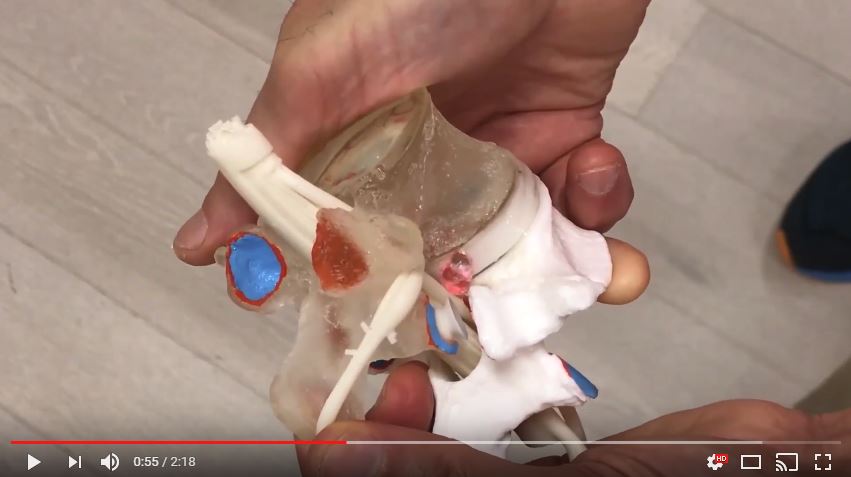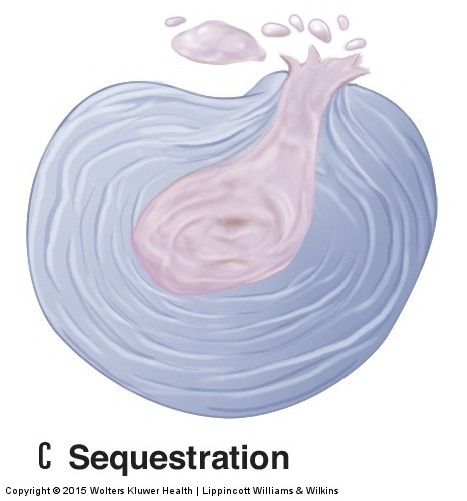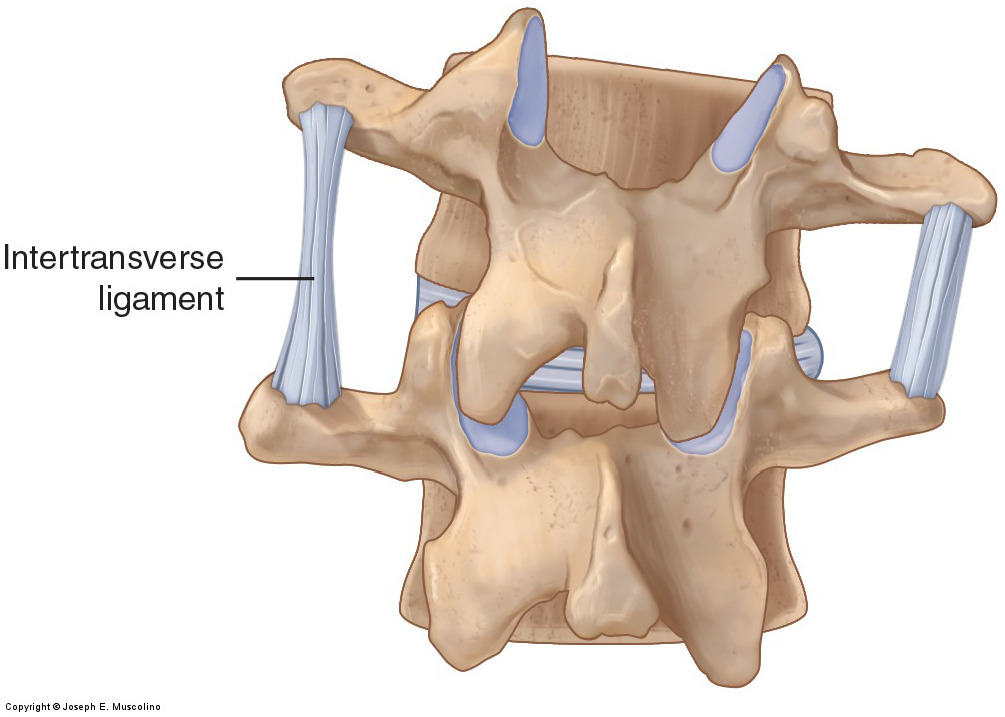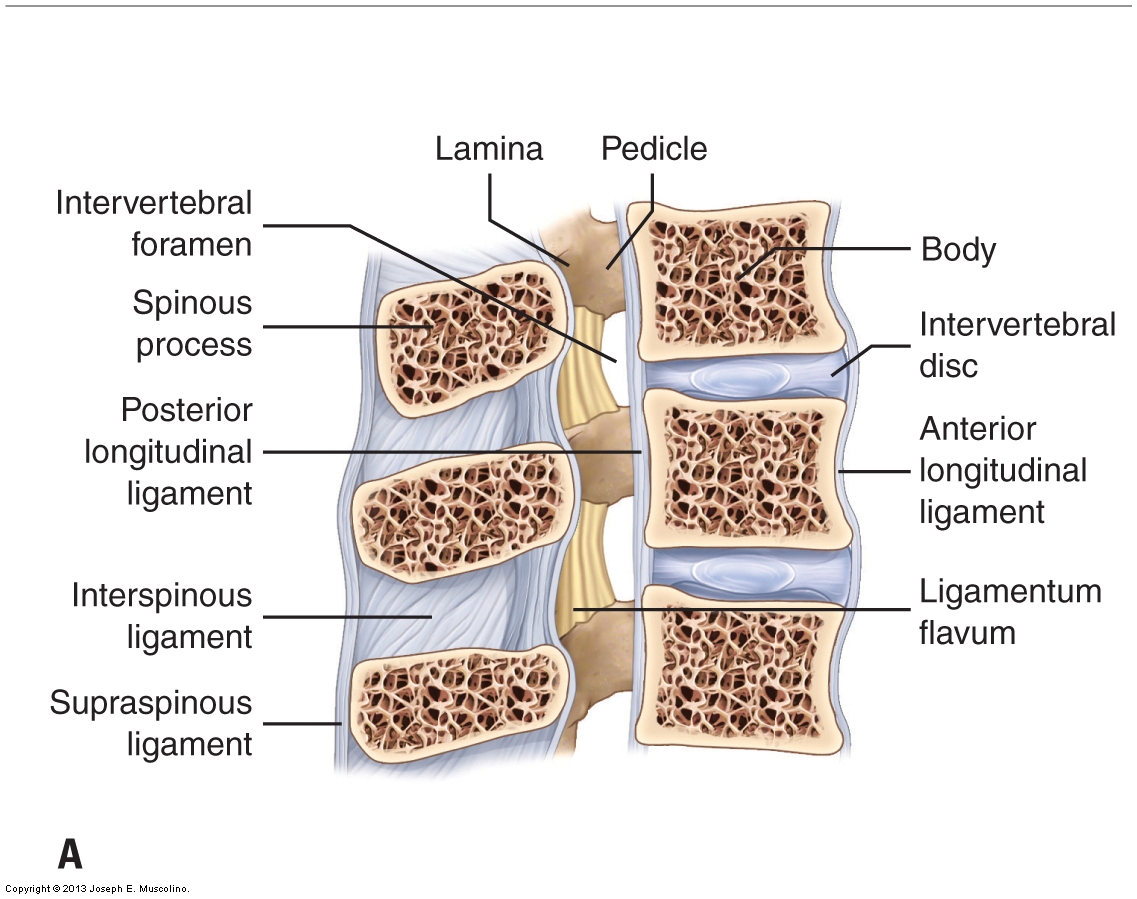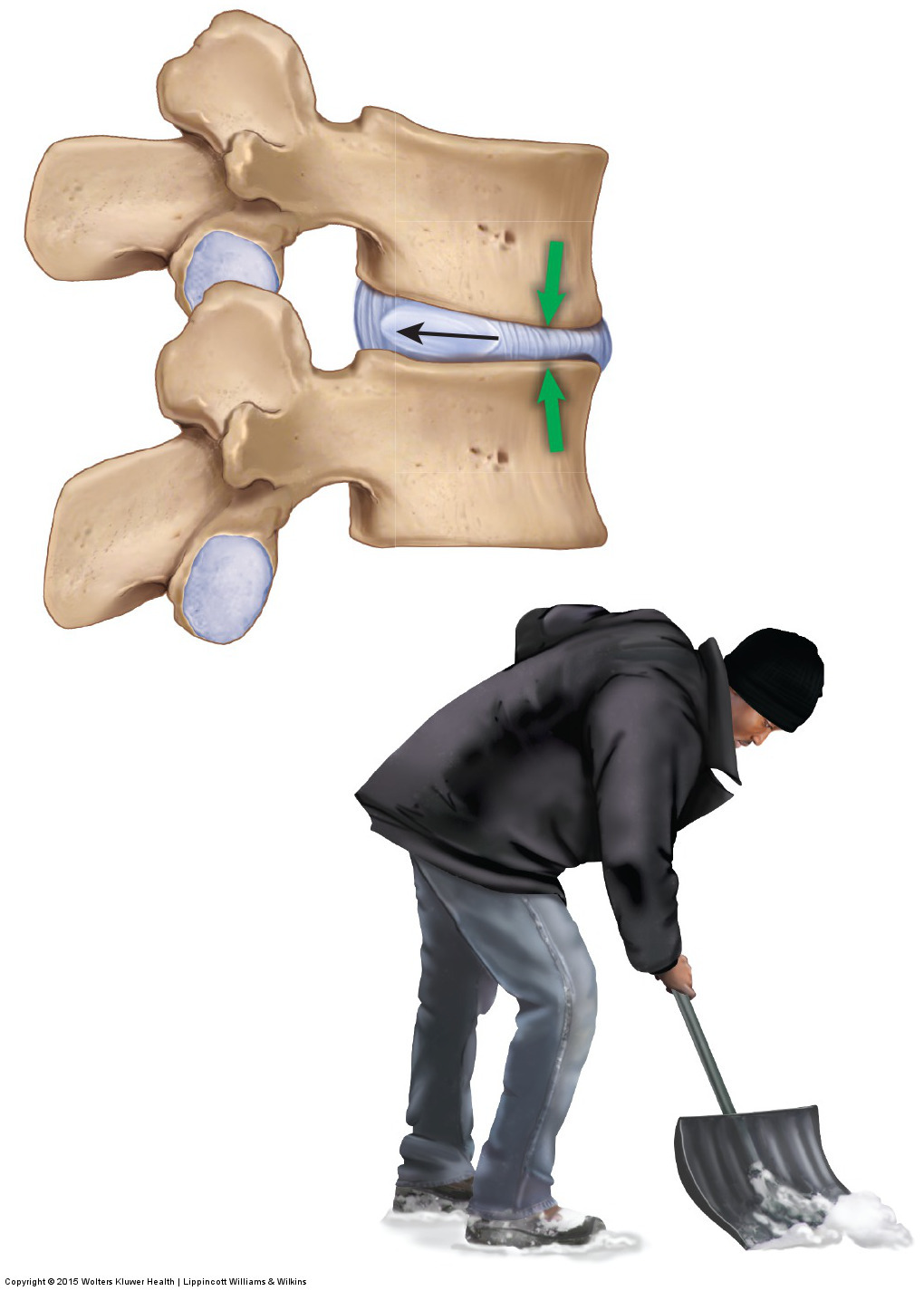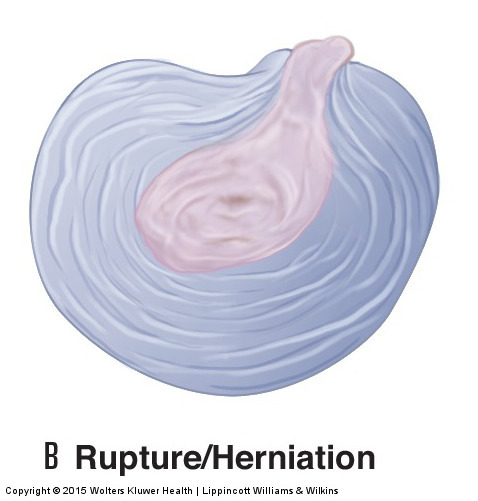Spinal flexion loads the anterior aspect of the spinal disc, driving the nucleus pulposus posteriorly against the stretch-taut annular fibers. This can increase a bulging or herniated disc pathology. In today’s video, let’s have a look at Anterior and Posterior …
Pathologic Disc Conditions of the Lumbar Spine and Sciatica
A pathologic disc can compress the sciatic nerve resulting in sciatica. Although any pathologic disc is potentially serious.
Ligaments of the Lumbar Spine and Pelvis
The “action” of a ligament is similar to that of an antagonist muscle. If either is tight/taut, it restricts motion to the opposite side.
Bones of the Lumbar Spine and Pelvis
The low back is defined by the lumbar spine, composed of 5 vertebrae, named L1-L5. The pelvis is defined by the bones of the pelvic girdle.
Ligaments of the Cervical Spine
The “action” of a ligament is similar to that of an antagonist muscle. If either is tight/taut, it restricts motion in the opposite direction.
What are the causes of a pathologic intervertebral disc?
One cause of a pathologic disc (e.g., bulge, herniation) is excessive flexion postures, which drive the nucleus posteriorly against the taut annular fibers.
What is a pathologic intervertebral disc?
This article addresses the causes of the three different types of pathologic disc conditions: degenerated disc, bulging disc, and herniated disc.

